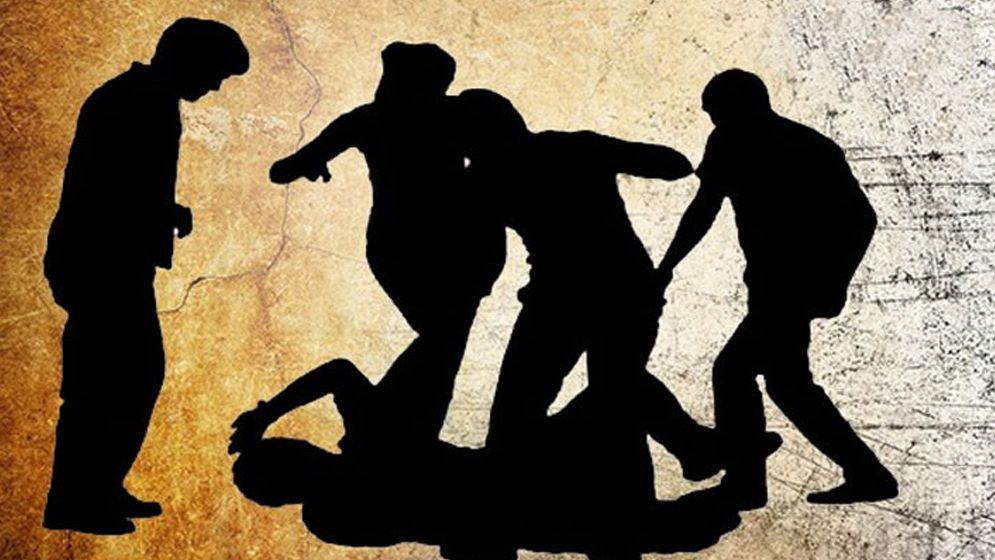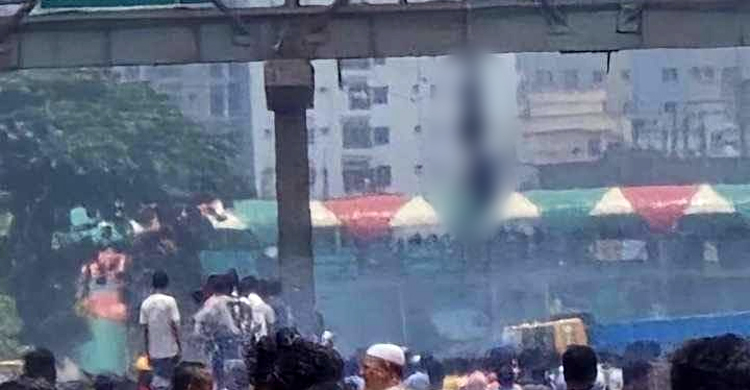By Dr. Akash Mazumder and P. K. Sarker
Since the interim regime began functioning in Bangladesh under controversial circumstances, the wave of targeted killings—particularly of Awami League members—has drawn nationwide and global concern. On July 15, 2024, indemnity was granted to a range of actors accused in connection with political violence.
Honourable Prime Minister Sheikh Hasina boldly stated: “Those who have granted indemnity for the murder are the ones who are truly responsible.”
This column examines the political, legal, and ethical implications of that indemnity, alongside the shocking data revealing that 230 members of the ruling Awami League were killed between July 15 and August 4, 2024. Through historical reflection, political analysis, and data-backed reasoning, this column investigates whether indemnity has become a shield for murderers and a tool for authoritarian manipulation.
A nation in crisis
When a country grants indemnity to perpetrators of violence, it fundamentally alters the trajectory of justice and morality. The decision by the interim regime in Bangladesh to offer indemnity to various individuals accused of involvement in political murders has stirred widespread outrage, fear, and chaos. In a statement that will be remembered in the annals of Bangladesh’s political history, Honourable Prime Minister Sheikh Hasina declared on record:
Indemnity has been given since July 15, 2024. Therefore, those who have been granted indemnity are responsible for the murder. The calculation must be done from July 15. Because 230 Awami League members have been killed from July to August 4 in Bangladesh.

This column seeks to decode that statement and to document the unraveling crisis that it responds to—a systemic orchestration of indemnified terror under a questionable interim regime.
Indemnity: Historical and legal perspectives
Indemnity, in legal and political terminology, refers to immunity granted to individuals from legal prosecution for actions taken, often under the justification of state authority or national interest. In postcolonial South Asia, indemnity laws have often been weaponised to protect military rulers, bureaucrats, or political allies from consequences. One infamous case is the Indemnity Ordinance of 1975, which protected the killers of Bangabandhu Sheikh Mujibur Rahman and his family.
Key characteristics of political indemnity
-It blocks judicial proceedings.
-It denies victims and their families a path to justice.
-It allows state impunity to be institutionalised.
The 2024 indemnity is not the first such event in Bangladeshi history, but it might be the most violent in terms of its immediate consequences.
Data of Death: 230 Awami League Members Killed (July 15–August 4, 2024)
Let’s put the Prime Minister’s statement in context. Between July 15 and August 4, 2024, within merely 20 days, 230 Awami League leaders and grassroots activists were killed, often in coordinated assassinations, mysterious disappearances, or mob trials disguised as “community justice.”
This figure does not include:
-Injured survivors (over 800 reported cases),
-Property destruction (party offices torched in 41 districts),
-Family members of activists who were harassed or abducted.
Pattern Observed:
-Victims were mostly union-level and ward-level organisers of the Awami League.

-Many were abducted at night, bodies found in rivers, highways, or char areas.
-Killings followed social media posts inciting violence, often using fabricated images or allegations.
Who granted indemnity and why?
The interim regime that assumed control during the post-election impasse of mid-2024 has remained opaque in its legal structure and accountability mechanisms. Reports suggest that the regime, backed by foreign interests and technocratic actors, issued the “National Stability Ordinance” on July 15, 2024, which retroactively indemnified all forces participating in “stabilisation efforts.”
Key beneficiaries of indemnity
-Security forces implicated in disappearances.
-Local vigilante groups operated by certain NGOs.
-Foreign intelligence-linked collaborators accused of inciting communal clashes.
-Digital propaganda units spreading hatred and misinformation.
The ordinance not only indemnified them but also prohibited courts from hearing cases filed between July 1 and August 15, 2024—a legal black hole.
Prime Minister Sheikh Hasina’s moral framing
Sheikh Hasina’s condemnation is not only a political statement, it is a moral thesis. It affirms:
-That murder under the guise of indemnity is institutional violence.
-That silence in the face of indemnity is complicity.
-That those who protect the murderers with legal immunity are morally accountable for the bloodshed.
She has urged the global community and legal experts to treat the indemnity as null and void under international humanitarian law.
Impunity and political violence: A comparative South Asian lens
Across South Asia, the misuse of indemnity has always preceded violent political transitions:
-Pakistan’s NRO (2007) protected military officers and politicians accused of corruption and killings.
-India’s Armed Forces (Special Powers) Act (AFSPA) has often been criticised for shielding soldiers involved in civilian massacres.
-Sri Lanka’s post-war “No War Crimes” indemnities have prevented justice for Tamil victims.
-In Bangladesh, such tools have reappeared with terrifying efficiency in 2024.
Evidence of state-backed or state-sheltered violence
Multiple independent reports, including leaked documents and field investigations, indicate the involvement of:
-Certain military-led Rapid Units
-Foreign-trained “Cyber Patrol” units that blacklisted Awami League activists
-NGO fronts allegedly funded by controversial international actors.
Case Examples:
1. Rangamati, July 17: Four local leaders killed in their homes after being named in online “traitor” lists.
2. Faridpur, July 22: A full Awami League ward committee kidnapped en masse; nine bodies found later.
3. Comilla, July 25: Firebomb attack on a local office; three charred beyond recognition.
Social media as a tool for mobilised lynchings
-AI-driven social media monitoring revealed coordinated efforts to target individuals with
-Deepfakes portraying them as “collaborators,” “rapists,” or “traitors.”
-Anonymous pages mobilising mobs within minutes.
-Propaganda branding grassroots politicians as “elite oppressors.”
Many mobs, once incited, acted with impunity, knowing the state would not prosecute them under the indemnity clause.
Indemnity vs constitutionality
Leading constitutional scholars argue that the ordinance:
-Violates Article 27 (equality before law) of the Bangladesh Constitution.
-Contradicts the Universal Declaration of Human Rights, especially Articles 6–11.
It is a “blank cheque for murder”, and therefore must be reversed through public litigation or international arbitration.
Reclaiming justice
a) Revoke the ordinance immediately
-Civil society, political parties, and international bodies must demand an immediate repeal of the July 15 indemnity clause.
b) Establish a truth and reconciliation commission
-Document all crimes between July 1 and August 15.
-Collect oral histories of the families of the victims.
-Offer reparations and symbolic justice.
c) Name the perpetrators
-A national database should be created to name those who granted and benefited from indemnity.
-Honour the 230 Awami League martyrs in public records.
d) Digital accountability
-Enforce laws against digital mob incitement.
-Regulate NGO and foreign digital actors who played a role in propaganda.
The blood on the pen that granted indemnity
History does not forget those who granted impunity to killers. Bangladesh is once again at a crossroads. As Prime Minister Sheikh Hasina stated, indemnity is not a pardon—it is evidence of guilt at the highest level. The deaths of 230 members of the ruling party are not isolated tragedies. They are part of a larger architecture of calculated terror protected by legal deception.
To reverse this path, Bangladesh must rise above fear and reclaim its justice system—not just for the Awami League members, but for the soul of the republic itself.
References
-Amnesty International. (2024). Bangladesh: Interim Government’s Role in Political Murders.
-Bangladesh Legal Aid Forum. (2024). Indemnity Ordinances: Unconstitutional or Necessary?
-Transparency International Bangladesh. (2024). Data on Political Killings, July–August 2024.
-Human Rights Watch. (2024). Bangladesh’s Democracy Under Siege: Report on 230 AL Killings.
-Constitution of Bangladesh. (1972, Amended 2011). Article 27, 31, 44.
-Sheikh Hasina, Prime Minister. (2024, August). Official Statement at Gono Bhaban.
-Daily Janakantha, Daily Ittefaq, Prothom Alo Reports (July–August 2024).
-Rahman, S. (2024). The Return of Indemnity: Legal Myopia in Bangladesh’s Interim Crisis. Dhaka University Law Journal.
-UN Human Rights Council. (2024). UNHRC Resolution on Bangladesh, 2024-07/12.
1) Dr. Akash Mazumder
1) P. K. Karker: Political Analyst and Research Fellow in South Asian Politics